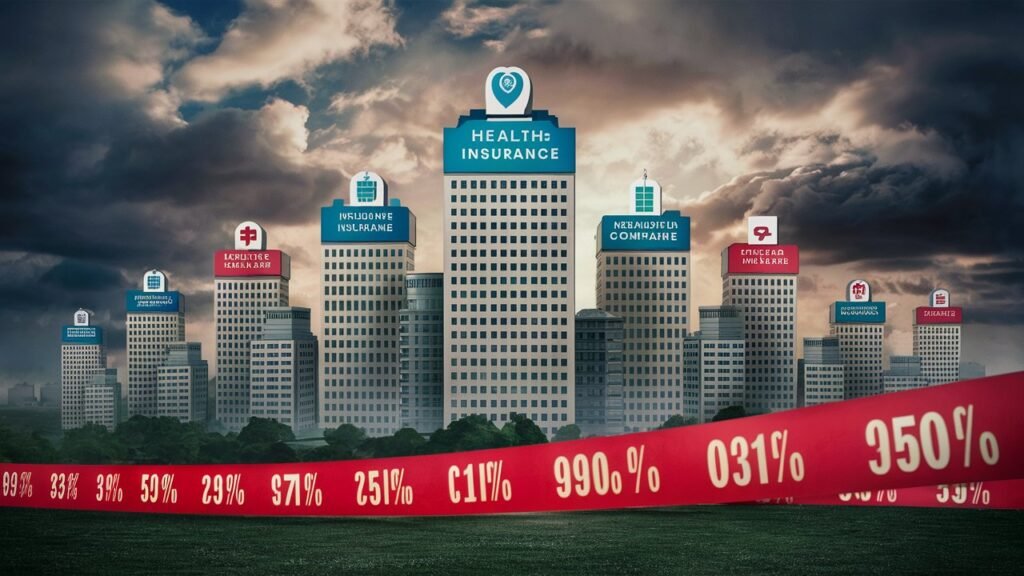In today’s dynamic healthcare landscape, understanding the factors contributing to health insurance premium increases is essential. This article delves into the intricacies of why health insurance premiums rise, offering insights into its relevance and importance in today’s society.

Defining Health Insurance Premiums
Health insurance premiums refer to the amount individuals or businesses pay to maintain health coverage. These premiums are typically paid monthly and serve as a financial safety net against medical expenses.
Importance of Understanding Premium Increases
As healthcare costs continue to escalate, grasping why health insurance premiums increase is crucial for individuals, families, and businesses alike. By understanding the drivers behind these increases, individuals can make informed decisions regarding their healthcare coverage.
Types and Categories
Individual Health Insurance
Individual health insurance plans cater to the needs of single policyholders and their families. Premiums for individual plans can vary based on factors such as age, location, and coverage level.
Group Health Insurance
Group health insurance plans are offered by employers to their employees. These plans often provide more comprehensive coverage at lower premium rates due to group purchasing power.
Symptoms and Signs
Escalating Healthcare Costs
One of the primary symptoms of rising health insurance premiums is the continuous increase in healthcare costs. Factors such as inflation, advances in medical technology, and the aging population contribute to this trend.
High-Deductible Health Plans (HDHPs)
The proliferation of high-deductible health plans has also impacted premium costs. While HDHPs offer lower premiums, they come with higher deductibles, leading to increased out-of-pocket expenses for policyholders.
Causes and Risk Factors
Medical Inflation
Medical inflation, which outpaces general inflation, plays a significant role in driving health insurance premium increases. Costs associated with hospital services, prescription drugs, and medical procedures contribute to this inflationary pressure.
Lifestyle-Related Health Issues
The prevalence of lifestyle-related health issues, such as obesity, diabetes, and heart disease, increases healthcare utilization and drives up insurance costs. Addressing these risk factors through preventive measures can help mitigate premium increases.
Diagnosis and Tests
Actuarial Analysis
Actuarial analysis plays a crucial role in determining health insurance premiums. Actuaries assess various factors, including demographic data, claims history, and medical trends, to calculate risk and set premium rates.
Underwriting Practices
Insurance underwriting involves assessing an individual’s risk profile to determine their insurability and premium rates. Factors such as age, medical history, and lifestyle habits influence underwriting decisions.

Treatment Options
Utilization Management
Insurance companies employ utilization management techniques to control healthcare costs and, subsequently, premium increases. These techniques may include preauthorization requirements, step therapy protocols, and network restrictions.
Value-Based Care Initiatives
Value-based care initiatives aim to improve the quality and efficiency of healthcare delivery while reducing costs. By incentivizing positive health outcomes and preventive care, these initiatives can help mitigate premium increases over time.
Preventive Measures
Health and Wellness Programs
Health and wellness programs promote preventive care and healthy lifestyle choices among policyholders. By incentivizing regular screenings, exercise, and nutrition, these programs can reduce the incidence of costly health conditions.
Chronic Disease Management
Chronic disease management programs focus on supporting individuals with long-term health conditions, such as diabetes and hypertension. By optimizing disease management and adherence to treatment plans, these programs can prevent complications and reduce healthcare costs.
Personal Stories or Case Studies
John’s Story: Navigating Rising Premiums
John, a small business owner, shares his experience with rising health insurance premiums. Despite implementing cost-sharing strategies and wellness initiatives, John grapples with the financial burden of providing health coverage for his employees.
Maria’s Journey to Wellness
Maria, a policyholder with a history of chronic health issues, recounts her journey to better health through proactive disease management. By leveraging her insurance company’s wellness resources, Maria has reduced her healthcare costs and improved her overall well-being.
Expert Insights
Dr. Smith’s Perspective
“As a healthcare provider, I’ve witnessed firsthand the impact of rising health insurance premiums on patients’ access to care. It’s crucial for individuals to prioritize preventive measures and advocate for policies that promote affordability and transparency in healthcare.”
Conclusion
In conclusion, understanding the factors driving health insurance premium increases is essential for navigating today’s complex healthcare landscape. By addressing root causes such as medical inflation, lifestyle-related health issues, and utilization patterns, stakeholders can work towards sustainable solutions that ensure access to quality care for all.

